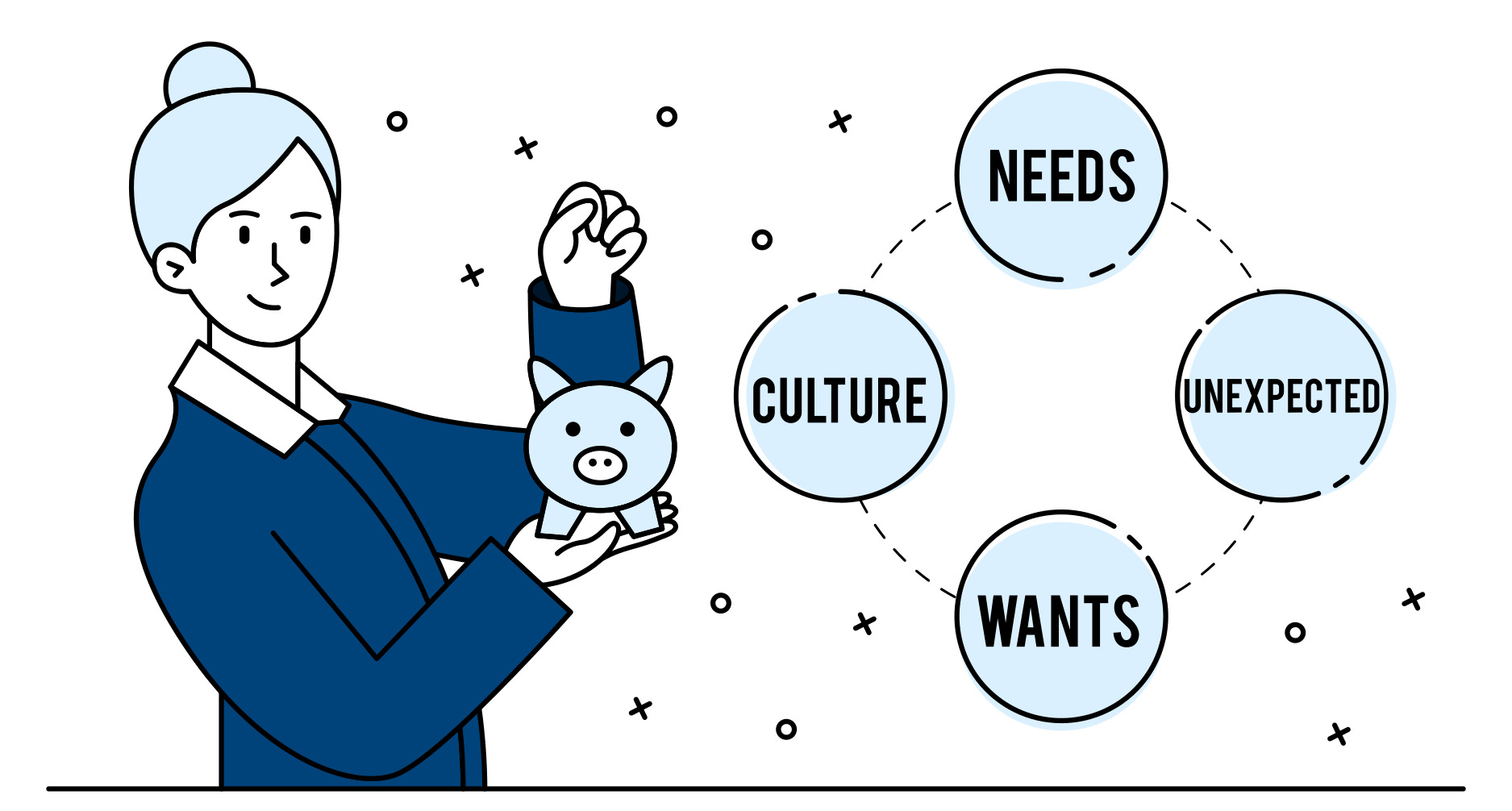I’ve always been fascinated with Japanese culture. I grew up hearing stories of brave samurai warriors and hardworking apprentices that wash rice for ten years before being allowed in the kitchen. It’s a society in constant flux with technological development constantly pushing the boundaries of what’s considered possible. Yet, they have this deep-rooted connection with nature and tradition that I find admirable.
And so, when I heard of the Japanese tradition of kakeibo, which is an old budgeting technique that combines mindfulness with diligent expense tracking to help people curb their overspending, I was highly intrigued and had to learn more. Could this be the samurai sword of budgeting? Could this be the budget of all budgets? Let’s find out!
What Is the Kakeibo Budgeting Strategy?
If we type “Kakeibo” into google translator, this is what comes out:
The literal translation of “Kakeibo” is “Household account book.” The strategy was created by a journalist named Hani Motoko in 1904 as a way for housewives to combine mindfulness with expense tracking to help them take control of their finances. The budgeting strategy revolves around the following four questions:
- How much money do you have to spend right now
- How much would you like to save up?
- How much are you spending right now?
- How can you improve your budget?
You Don’t Need Technology or Budgeting Apps.
We live in a world inundated with budgeting apps and technology to help us track our expenses. However, with the Kakeibo budgeting system, it requires you to physically write all your purchases down, place them into four categories:
- Your Needs: These are things you can’t live without, like food, water, toiletries, and more
- Your Wants: These are things you like buying but can live without—stuff like extra clothes, nights out, and extra gifts.
- Culture: These are things like museum trips or educational materials.
- Unexpected Expenses: These are the things you weren’t planning on spending money on, such as a broken-down car, A/C, or other home improvements.
By diligently tracking each of these categories, you will eventually become more mindful of your spending habits and have more control over your money.
What Are the Benefits of Using Kakeibo Budgeting?
Kakeibo budgeting is perfect for anyone who wants to simplify their finances and prefers minimal budgets. Its specific approach to mindfulness sets it apart from other strategies. It encourages you to get a clear idea of how much money you have coming in and going out, so you get more control over your savings and spend money on things that make you happy.
Here are some of the benefits of the kakeibo budgeting strategy:
- By grouping your expenses into four clear categories, kakeibo budgeting helps you simplify your finances.
- The kakeibo budget encourages you to pursue realistic monthly saving goals.
- Encourages you to save small amounts regularly rather than one large amount now and then.
- Celebrates small achievements to keep you motivated.
- Assists you with controlling your spending so you can buy things that make you happy.
Getting Started with Kakeibo Budgeting
Getting started with kakeibo budgeting is simple!
Here’s how it works. At the beginning of each month:
1. Establish How Much Money You Have
Take a note of your total income for the month and then subtract your fixed expenses to determine your remaining amount.
2. Determine Your Savings Target
A vital part of the Kakeibo budget is setting aside money towards savings goals. Establish what you’re saving towards and set aside a reasonable amount at the beginning of each month.
3. Monitor Your Spending
Kakeibo budgeting is all about mindfulness, so a critical part of the strategy involves writing down all your expenses in real-time so you get a sense of how your spending could impact your future. Continue adjusting as needed instead of panicking last minute.
4. Calculate How Much You’re Spending In Each Category
Allocate all your expenses to one of the four categories we discussed earlier; needs, wants, unexpected, and cultural expenses.
5. Figure Out How Much You’ve Spent and Saved
Figure out how much you’ve spent over the month and deduct the amount from your total budget, which we determined in step one.
6. Make Changes if Needed and Repeat the Process.
Kakeibo involves reflecting on your expenses to determine if you met your goals or achieved your desired outcomes. Do you feel like you saved enough? Were your costs too high? Could you reduce certain expenses so you can allocate more towards investments? Whatever your goals are, reflect on them and figure out ways of improving the following month.
Who Would Benefit from the Kakeibo Budgeting Strategy?
If you’ve ever had trouble sticking to a budget or are fearful about your spending, the kakeibo budgeting strategy could be perfect for you. The minimalist approach isn’t as overwhelming as other strategies, and it’s a great way of being more mindful about your expenses and helping you take control of your finances as a result. If you’ve never budgeted before, using the kakeibo could help keep you motivated because it encourages you to celebrate even the most minor savings achievements. If you’re already familiar with the envelope budgeting system, using the Kakeibo could be an even more straightforward and more impactful way to manage your budgets and achieve your financial goals.
Bottom Line
Budgeting is tricky, but it doesn’t have to be that way. Technology has undoubtedly helped democratize access to budgeting software, but sometimes technology can be overkill. Sometimes, we need to be more mindful and present with our expenses and take a holistic approach to budget and saving. If you’re having trouble, Stately Credit is always here to help. Find out how we could help you alleviate financial stress when an emergency strikes!



